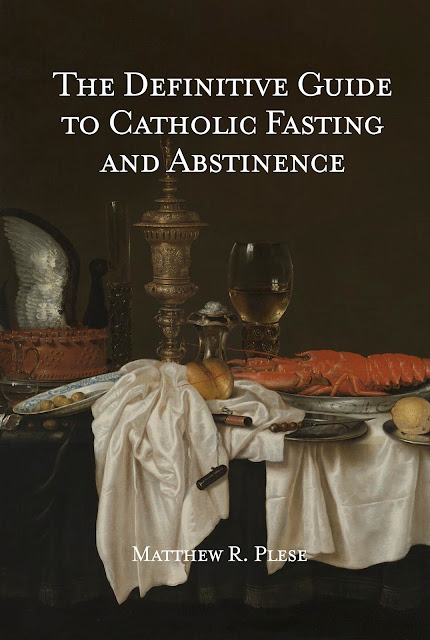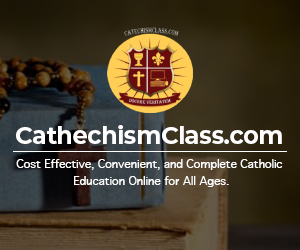In honor of
Trinity Sunday, I am sharing Question 32, Article 1 from
St. Thomas Aquinas'
Summa Theologica.
Whether the trinity of the divine persons can be known by natural reason?
Objection 1. It would seem that the trinity of the divine persons can be known by natural reason. For philosophers came to the knowledge of God not otherwise than by natural reason. Now we find that they said many things about the trinity of persons, for Aristotle says (De Coelo et Mundo i, 2): "Through this number"--namely, three--"we bring ourselves to acknowledge the greatness of one God, surpassing all things created." And Augustine says (Confess. vii, 9): "I have read in their works, not in so many words, but enforced by many and various reasons, that in the beginning was the Word, and the Word was with God, and the Word was God," and so on; in which passage the distinction of persons is laid down. We read, moreover, in a gloss on Romans 1 and Exodus 8 that the magicians of Pharaoh failed in the third sign--that is, as regards knowledge of a third person--i.e. of the Holy Ghost --and thus it is clear that they knew at least two persons. Likewise Trismegistus says: "The monad begot a monad, and reflected upon itself its own heat." By which words the generation of the Son and procession of the Holy Ghost seem to be indicated. Therefore knowledge of the divine persons can be obtained by natural reason.
Objection 2. Further, Richard St. Victor says (De Trin. i, 4): "I believe without doubt that probable and even necessary arguments can be found for any explanation of the truth." So even to prove the Trinity some have brought forward a reason from the infinite goodness of God, who communicates Himself infinitely in the procession of the divine persons; while some are moved by the consideration that "no good thing can be joyfully possessed without partnership." Augustine proceeds (De Trin. x, 4; x, 11,12) to prove the trinity of persons by the procession of the word and of love in our own mind; and we have followed him in this (27, 1 and 3). Therefore the trinity of persons can be known by natural reason.
Objection 3. Further, it seems to be superfluous to teach what cannot be known by natural reason. But it ought not to be said that the divine tradition of the Trinity is superfluous. Therefore the trinity of persons can be known by natural reason.
On the contrary, Hilary says (De Trin. i), "Let no man think to reach the sacred mystery of generation by his own mind." And Ambrose says (De Fide ii, 5), "It is impossible to know the secret of generation. The mind fails, the voice is silent." But the trinity of the divine persons is distinguished by origin of generation and procession (30, 2). Since, therefore, man cannot know, and with his understanding grasp that for which no necessary reason can be given, it follows that the trinity of persons cannot be known by reason.
I answer that, It is impossible to attain to the knowledge of the Trinity by natural reason. For, as above explained (12, 4, 12), man cannot obtain the knowledge of God by natural reason except from creatures. Now creatures lead us to the knowledge of God, as effects do to their cause. Accordingly, by natural reason we can know of God that only which of necessity belongs to Him as the principle of things, and we have cited this fundamental principle in treating of God as above (Question 12, Article 12). Now, the creative power of God is common to the whole Trinity; and hence it belongs to the unity of the essence, and not to the distinction of the persons. Therefore, by natural reason we can know what belongs to the unity of the essence, but not what belongs to the distinction of the persons. Whoever, then, tries to prove the trinity of persons by natural reason, derogates from faith in two ways.
Firstly, as regards the dignity of faith itself, which consists in its being concerned with invisible things, that exceed human reason; wherefore the Apostle says that "faith is of things that appear not" (Hebrews 11:1), and the same Apostle says also, "We speak wisdom among the perfect, but not the wisdom of this world, nor of the princes of this world; but we speak the wisdom of God in a mystery which is hidden" (1 Corinthians 2:6-7).
Secondly, as regards the utility of drawing others to the faith. For when anyone in the endeavor to prove the faith brings forward reasons which are not cogent, he falls under the ridicule of the unbelievers: since they suppose that we stand upon such reasons, and that we believe on such grounds.
Therefore, we must not attempt to prove what is of faith, except by authority alone, to those who receive the authority; while as regards others it suffices to prove that what faith teaches is not impossible. Hence it is said by Dionysius (Div. Nom. ii): "Whoever wholly resists the word, is far off from our philosophy; whereas if he regards the truth of the word"--i.e. "the sacred word, we too follow this rule."
Reply to Objection 1. The philosophers did not know the mystery of the trinity of the divine persons by its proper attributes, such as paternity, filiation, and procession, according to the Apostle's words, "We speak the wisdom of God which none of the princes of the world"--i.e. the philosophers--"knew" (1 Corinthians 2:6). Nevertheless, they knew some of the essential attributes appropriated to the persons, as power to the Father, wisdom to the Son, goodness to the Holy Ghost; as will later on appear. So, when Aristotle said, "By this number," etc., we must not take it as if he affirmed a threefold number in God, but that he wished to say that the ancients used the threefold number in their sacrifices and prayers on account of some perfection residing in the number three. In the Platonic books also we find, "In the beginning was the word," not as meaning the Person begotten in God, but as meaning the ideal type whereby God made all things, and which is appropriated to the Son. And although they knew these were appropriated to the three persons, yet they are said to have failed in the third sign--that is, in the knowledge of the third person, because they deviated from the goodness appropriated to the Holy Ghost, in that knowing God "they did not glorify Him as God" (Romans 1); or, because the Platonists asserted the existence of one Primal Being whom they also declared to be the father of the universe, they consequently maintained the existence of another substance beneath him, which they called "mind" or the "paternal intellect," containing the idea of all things, as Macrobius relates (Som. Scip. iv). They did not, however, assert the existence of a third separate substance which might correspond to the Holy Ghost. So also we do not assert that the Father and the Son differ in substance, which was the error of Origen and Arius, who in this followed the Platonists. When Trismegistus says, "Monad begot monad," etc., this does not refer to the generation of the Son, or to the procession of the Holy Ghost, but to the production of the world. For one God produced one world by reason of His love for Himself.
Reply to Objection 2. Reason may be employed in two ways to establish a point: firstly, for the purpose of furnishing sufficient proof of some principle, as in natural science, where sufficient proof can be brought to show that the movement of the heavens is always of uniform velocity. Reason is employed in another way, not as furnishing a sufficient proof of a principle, but as confirming an already established principle, by showing the congruity of its results, as in astrology the theory of eccentrics and epicycles is considered as established, because thereby the sensible appearances of the heavenly movements can be explained; not, however, as if this proof were sufficient, forasmuch as some other theory might explain them. In the first way, we can prove that God is one; and the like. In the second way, reasons avail to prove the Trinity; as, when assumed to be true, such reasons confirm it. We must not, however, think that the trinity of persons is adequately proved by such reasons. This becomes evident when we consider each point; for the infinite goodness of God is manifested also in creation, because to produce from nothing is an act of infinite power. For if God communicates Himself by His infinite goodness, it is not necessary that an infinite effect should proceed from God: but that according to its own mode and capacity it should receive the divine goodness. Likewise, when it is said that joyous possession of good requires partnership, this holds in the case of one not having perfect goodness: hence it needs to share some other's good, in order to have the goodness of complete happiness. Nor is the image in our mind an adequate proof in the case of God, forasmuch as the intellect is not in God and ourselves univocally. Hence, Augustine says (Tract. xxvii. in Joan.) that by faith we arrive at knowledge, and not conversely.
Reply to Objection 3. There are two reason why the knowledge of the divine persons was necessary for us. It was necessary for the right idea of creation. The fact of saying that God made all things by His Word excludes the error of those who say that God produced things by necessity. When we say that in Him there is a procession of love, we show that God produced creatures not because He needed them, nor because of any other extrinsic reason, but on account of the love of His own goodness. So Moses, when he had said, "In the beginning God created heaven and earth," subjoined, "God said, Let there be light," to manifest the divine Word; and then said, "God saw the light that it was good," to show proof of the divine love. The same is also found in the other works of creation. In another way, and chiefly, that we may think rightly concerning the salvation of the human race, accomplished by the Incarnate Son, and by the gift of the Holy Ghost.




.JPG)




















.jpg)

.jpg)












